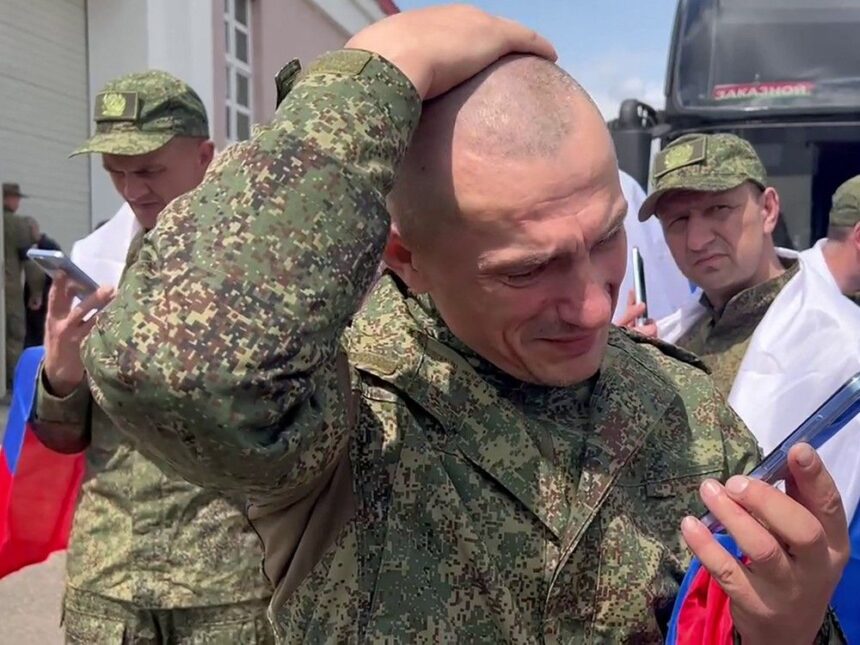The dust-covered dashboard clock read 6:17 AM as our convoy crossed into Ukrainian-controlled territory. My fixer Dmitry, a former economics professor turned volunteer, pointed toward a distant hillside where Ukrainian forces had recently repelled another Russian assault. “Every day they come, and every day more Russians die for a few meters of land,” he said quietly.
According to Ukraine’s military intelligence directorate, Russian casualties in this grinding conflict have now surpassed a staggering milestone: one million soldiers killed, wounded, or captured since the full-scale invasion began in February 2022.
Ukrainian military spokesman Andriy Kovalenko announced the figure this week, claiming specifically that Russian losses include approximately 315,000 killed and 500,000 wounded, with others missing or captured. These numbers represent what would be the largest military casualties sustained by any country in a single conflict since World War II.
Moscow has maintained characteristic silence on its true casualty figures. The Russian defense ministry last acknowledged military deaths in September 2022, claiming just 5,937 soldiers had been killed – a figure that seemed implausible even then. Independent Russian media outlets like Mediazona, working with BBC Russia, have verified around 45,000 Russian deaths through open-source methods, though they acknowledge this represents only confirmed cases they could document.
“What we’re seeing is industrial-scale attrition warfare,” explained Dr. Marta Kepe, defense analyst at the RAND Corporation, whom I interviewed via encrypted call from Kyiv. “Russian tactics still rely heavily on human wave assaults that trade lives for incremental territorial gains. The casualty numbers, while difficult to verify precisely, align with the operational tempo we’ve observed.”
Western intelligence assessments generally support Ukraine’s claims, though with lower estimates. U.S. intelligence officials told me off-record that Russian casualties likely range between 600,000 to 800,000 – still an extraordinary figure that exceeds total American losses in all conflicts since Vietnam combined.
In Kramatorsk, I spoke with “Falcon,” a Ukrainian drone operator who monitors Russian troop movements. He scrolled through footage on his tablet showing a recent Russian assault on Ukrainian positions near Avdiivka. “They send them in waves, often poorly trained mobilized soldiers first. We strike them, but they keep coming. Their commanders see these men as completely expendable.”
The human dimension of this grinding war becomes clearer in places like Belgorod, just across the Russian border, where I traveled last year. In a small cemetery on the city’s outskirts, fresh graves with identical military headstones stretched in long rows. Local residents spoke in hushed tones about “cargo 200” – the Soviet-era code for military casualties – arriving regularly.
Elena, who requested I use only her first name, lost her 22-year-old son in fighting near Bakhmut. “They told us he died a hero, but they wouldn’t let us see his body,” she said, showing me a photograph of a smiling young man in uniform. “Many families here have similar stories. We don’t believe the official numbers.”
The staggering casualty figures reflect Russia’s approach to this war – prioritizing territorial gains regardless of human cost. According to Pentagon assessments, Russia has maintained a roughly 3:1 casualty ratio compared to Ukrainian forces, though Ukraine’s losses remain significant and closely guarded.
What makes the Russian losses more remarkable is the composition of forces. The Institute for the Study of War notes that Russia has increasingly relied on prisoners, foreign fighters, and hastily mobilized civilians with minimal training. These troops often receive just weeks of preparation before being sent to the most intense sectors of the front.
“Russia’s demographic issues will be felt for generations,” noted Sergei Guriev, Russian economist in exile and professor at Sciences Po. “They’re losing primarily young men of reproductive age, creating a demographic hole similar to what happened after World War II, but without the same patriotic narrative to justify it domestically.”
The war’s grinding nature was evident during my recent visit to Kharkiv, where Russian forces have launched a new offensive despite these losses. At a military hospital, doctors worked around the clock treating wounded from both sides. One Russian prisoner, a 19-year-old conscript from Siberia, told me his unit of 120 men was reduced to 23 in a single day of fighting.
For context, Soviet forces lost approximately 8.7 million soldiers during World War II over four years. Russia’s current losses, even using conservative Western estimates, already represent a per-capita casualty rate approaching those catastrophic levels, but without the existential threat that motivated Soviet resistance.
The human wave tactics reflect Russia’s strategic calculation that it can endure higher casualties than Ukraine in a war of attrition. With a population three times larger and an increasingly militarized economy, Moscow appears willing to sustain these losses while gambling that Western support for Ukraine will eventually falter.
As I prepared to leave Ukraine, air raid sirens wailed across Kyiv. In a nearby shelter, Oleksandra, a university student volunteering as a medic, scrolled through intercepted Russian communications on her phone. “They keep sending more people to die,” she said. “The question is how long can this continue before something breaks – either their will to fight or our ability to resist.”
The answer to that question may determine not just the war’s outcome, but the future security architecture of Europe itself.






